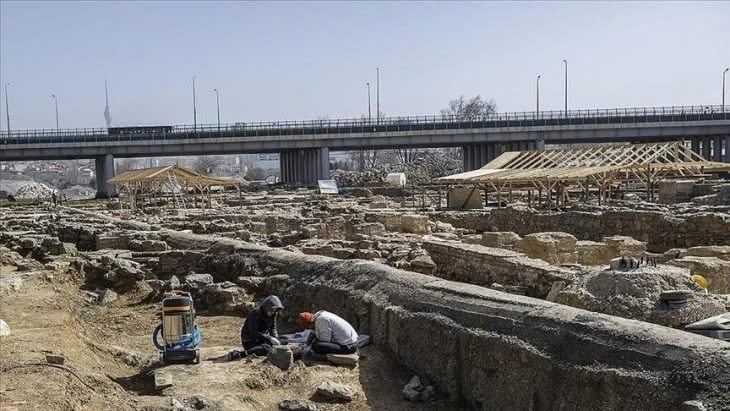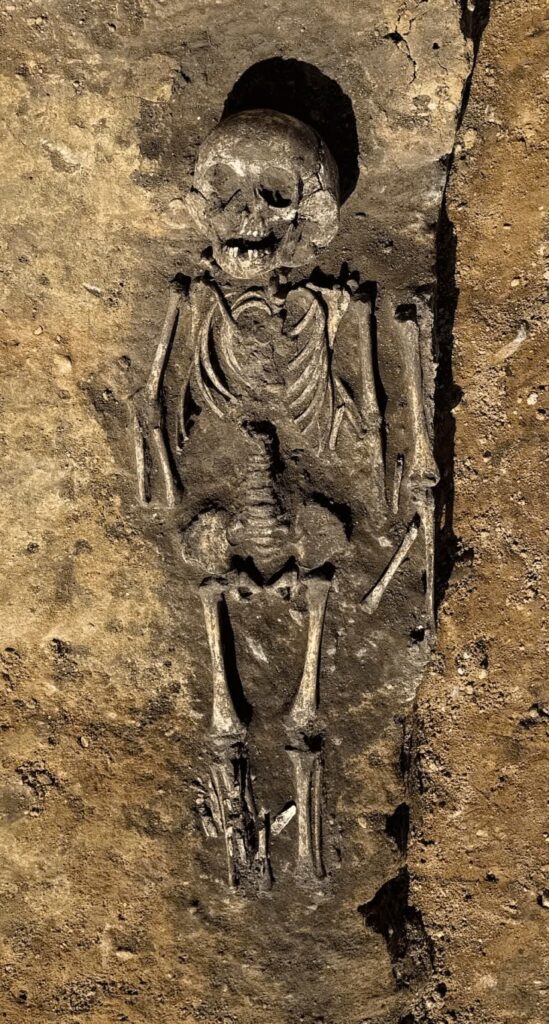Ancient Slavic Settlement Discovered During Power Line Project
In an intriguing archaeological find, researchers from the State Office for Monument Preservation and Archaeology (LDA) in Saxony-Anhalt have unearthed a medieval Slavic settlement and burial site near Wettin-Löbejün, Germany. This significant discovery emerged during the preliminary stages of the SuedOstLink direct current powerline project.

Exploring Life in the 10th and 11th Centuries
Dating back to the 10th and 11th centuries, the settlement provides valuable insights into the everyday lives of its residents. Initially protected by a large ditch, the community eventually transformed into separate farmsteads. Evidence of iron ore mining, smelting activities, and textile production suggests a vibrant craft sector. Among the artifacts discovered were a finely crafted bead and a bronze bracelet, reflecting the settlement’s material culture.

A Densely Populated Cemetery with Christian Traditions
Nearby, archaeologists excavated a compact but densely packed burial ground. Project leader Susanne Friederich noted that the cemetery, measuring only 5 by 30 meters, contained 60 burials arranged in two parallel rows. The interments followed Christian customs, with the deceased laid on their backs facing east and accompanied by minimal grave goods.

Noteworthy Burials Capture Archaeologists’ Interest
An Exceptional ‘Family Grave’
Among the many burials, a square pit was identified as a ‘family grave’ containing two adults and two children. The presence of wooden corner posts and beams indicates an advanced burial structure, distinguishing this grave from the rest.

A Child with Hydrocephalus: A Testament to Ancient Compassion
One of the most touching discoveries was the burial of a child believed to have had hydrocephalus, a condition marked by an accumulation of cerebrospinal fluid in the skull. In a heartfelt gesture of community support, beads were placed on the child’s chest, reflecting the care shown for this young individual despite their likely limited lifespan.

This excavation not only illuminates the lives of Slavic settlers in medieval Germany but also offers insights into their burial customs and their compassionate treatment of individuals with health challenges. As work on the powerline project progresses, it remains to be seen what other historical treasures may emerge, further enhancing our understanding of this captivating era in European history.

